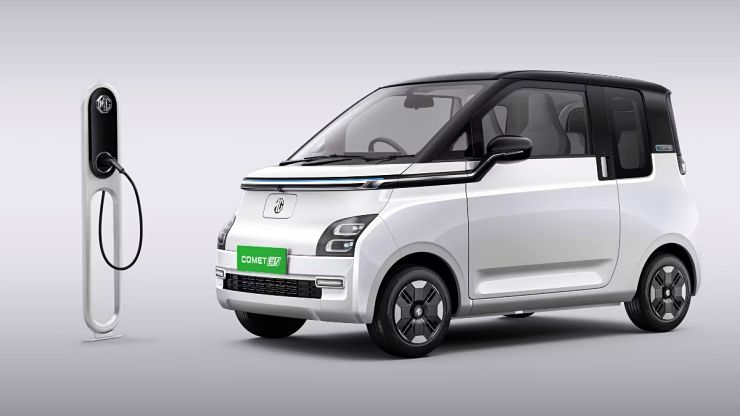Vinfast's MG Comet Challenger Gets Patented In India



VinFast, the Vietnamese electric vehicle manufacturer, has filed a design patent in India for its compact Minio Green EV. This move suggests a clear intention to tap into the growing demand for small, affordable electric cars for city use.
It also marks a significant shift in the company’s India plans, previously centred around mid-size electric SUVs like the VF6 and VF7. By targeting the micro EV segment currently dominated by the MG Comet, VinFast is hoping to carve out space in a market segment where practicality and affordability are key selling points.

The Minio Green is slightly larger than the MG Comet but retains the compact proportions suited to Indian urban roads. With a length of 3,090 mm, width of 1,496 mm, and height of 1,625 mm, along with a 2,065 mm wheelbase, the car balances interior space with tight-road usability. The three-door format helps reduce production costs while still offering usable space for city dwellers. It is clearly designed to appeal to budget-conscious EV buyers who want a city runabout without the bulk of a full-sized hatchback or SUV.

Visually, the Minio Green takes inspiration from modern compact SUVs rather than traditional hatchbacks. It features semicircular LED headlamps, vertically stacked tail-lights, and flap-style door handles.
Details like a blacked-out ORVM set, a subtle roof spoiler, and a shark fin antenna help give it a slightly upmarket look despite its budget focus. The 13-inch steel wheels confirm its cost-conscious approach while ensuring enough ground clearance for Indian roads.

Inside, the Minio Green is minimalistic. There’s no large touchscreen or flashy centre console. Instead, it relies on a basic dashboard layout and a digital driver display that shows key data such as speed, charge level, and estimated range.
A two-spoke steering wheel and blue trim inserts round off the utilitarian cabin. Everything seems geared toward cost control, durability, and ease of use — crucial for first-time EV buyers or fleet applications.
Performance-wise, the car is powered by a 27 hp electric motor mounted at the rear. It produces 65 Nm of torque, adequate for short trips and daily commutes. The battery pack is rated at 14.7 kWh, offering a claimed range of 170 km on the NEDC cycle. Real-world figures will likely be lower, but the range is still reasonable for a vehicle in this category. The top speed is capped at 80 km/h, reinforcing the car’s city-centric role.
One key highlight is the support for 12 kW fast charging. This could be a strong selling point for buyers who lack access to home charging setups and rely on public infrastructure.

VinFast’s wider strategy for India includes local production. Its plant in Thoothukudi, Tamil Nadu, is expected to begin operations with a production capacity of 50,000 units annually, which can be scaled up to 150,000 units. The same facility is also slated to serve as an export base for neighbouring markets in South Asia, the Middle East, and Africa.
For the Indian market, this localisation push could mean more competitive pricing. VinFast is aiming for around 30 to 40 percent local content initially, working with local suppliers to bring down costs. If executed well, the localisation strategy could allow the Minio Green to undercut rivals on price while offering similar performance and features.
The company is also likely to explore alternative ownership models, such as battery subscriptions or variant-based pricing, to make the vehicle more accessible to different customer segments. This would echo strategies seen in other emerging markets where EV affordability remains a hurdle.

The MG Comet EV currently holds a firm grip on the micro EV category, helped by its early mover advantage, brand familiarity, and established dealer network. However, the arrival of the Minio Green could shake things up. If VinFast can launch it around the Rs 10 lakh mark as expected, it would offer an alternative with a slightly bigger footprint, similar range, and potentially faster charging.
The company’s global EV experience and battery tech capabilities add credibility, but success in India will depend on more than just product specs. After-sales service, spare parts availability, and awareness campaigns will all play a role. Most importantly, the final price and value proposition must resonate with budget-minded urban buyers.